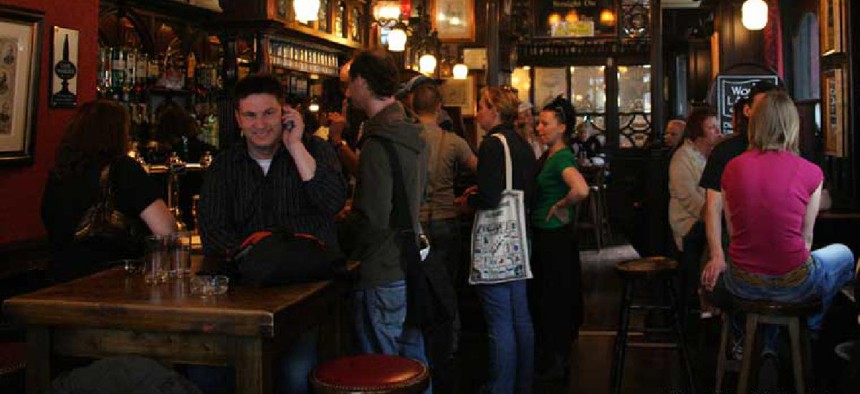Balancing health, prosperity and equity in COVID reopenings


Connecting state and local government leaders
A new computer model can give decision-makers important insights for understanding the tradeoffs between occupancy caps, virus transmission and disadvantaged populations.
Cities may soon be able to predict spread of COVID-19 and keep businesses afloat, thanks to a new computer model.
Developed by computer scientists at Stanford and Northwestern University, the model merges anonymous cellphone location information with demographic data and epidemiological estimates. It confirms that most COVID-19 transmissions occur at “superspreader” sites, where people remain in close quarters for extended periods, but it goes further to suggest that restricting maximum occupancy at specific venues is more effective than uniformly reducing mobility. The model’s specificity also reveals the tradeoffs between new infections and lost sales when cafes, restaurants and fitness centers operate at 20% or 50 % capacity. Additionally, it provides insights on the disproportionate infection rates among minorities and low-income people.
The researchers used aggregated, anonymized cellphone location data to trace hourly movements of 98 million Americans in 10 of the nation’s largest metropolitan areas as they traveled from neighborhoods through half a million different establishments -- from schools, churches, restaurants and fitness centers to pet stores and car dealerships. A partnership with SafeGraph, a company specializing in location data, helped the researchers calculate hourly occupancy density by matching up the cellphone location data with the types of businesses visited, noting the square footage of the establishments and how long visitors stayed.
According to the model, allowing fewer customers inside a business not only tends to lower transmissions rates, but it also benefits disadvantaged groups the most. “Because the places that employ minority and low-income people are often smaller and more crowded, occupancy caps on reopened stores can lower the risks they face,” David Grusky, the study’s co-author and a sociology professor at Stanford’s School of Humanities and Sciences, told Stanford News. Additionally, minority and low-income people shop at smaller, more crowded establishments and tend to leave home more often because their jobs aren’t suited to remote work.
“If you do something like cap the number of visits at 50% of maximum re-occupancy, we show that the economy will only lose, for example, 5 to 10% of [points of interest] visits … but at the same time you're able to reduce the overall number of infections by over 50%,” Stanford PhD student Serina Chang said in a Stanford video.
“Having the ability to understand how to reopen the economy, what effect would it have on the virus, and at the same time, how much business would be lost, gives a decision-maker an important tool that can balance these two factors for the best possible outcome,” said Jure Leskovec, the Stanford computer scientist who led the effort.
“In principle, anyone can use this model to understand the consequences of different stay-at-home and business closure policy decisions,” he said.
The team has made its tools and data publicly available and is now working to develop the model into a user-friendly tool for policymakers and public health officials. The research paper, “Mobility network models of COVID-19 explain inequities and inform reopening,” can be found on Nature.com.





